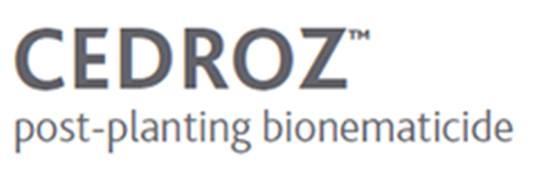
High-tech microencapsulation and gradual release
This natural technology is based on yeast cells that are a by-product of numerous commercial production processes. The capsules are microspheres characterized by a protein, lipid and polysaccharide fraction that constitute a porous structure. In the formulation phase, they incorporate two active terpenes — thymol and geraniol — inside the capsules.
The innovative system promotes suspensibility without using emulsion solvents. Once applied to the soil, the capsules provide modulated and gradual release of the terpenes through their microporous walls.
Figure 1: Microencapsulation technology

Figure 2: Gradual release technology

- When Cedroz is applied via the irrigation system, a mixture of free and encapsulated terpenes will enter the soil. The already-free terpenes have knockdown activity against the nematodes present in the soil.
- After irrigation, the amount of water is very low and, due to a particular equilibrium, no more terpenes are released, keeping the remaining terpenes in the capsules.
- Further irrigation will allow the remaining terpenes to be released into the soil.
The lethal effect of Cedroz on nematodes
An in vitro test demonstrated the lethal effect of Cedroz on root-knot nematodes (Meloidogyne). Watch the video to find out more.

Discover Cedroz
Cedroz gets to the root of the problem. As a sustainable soil care solution, Cedroz combats root-knot nematodes, promoting crop quantity and quality without leaving any residue behind.








